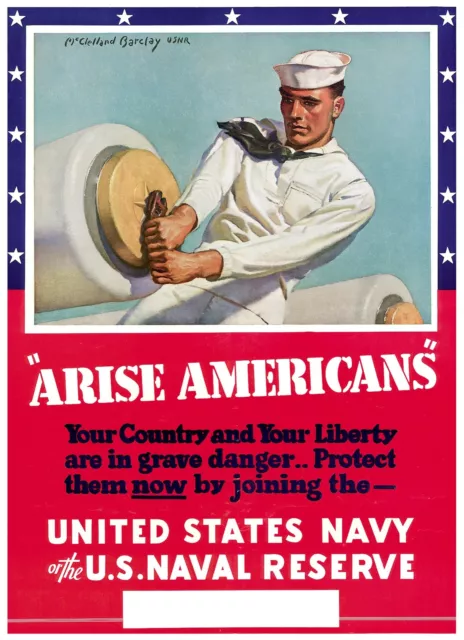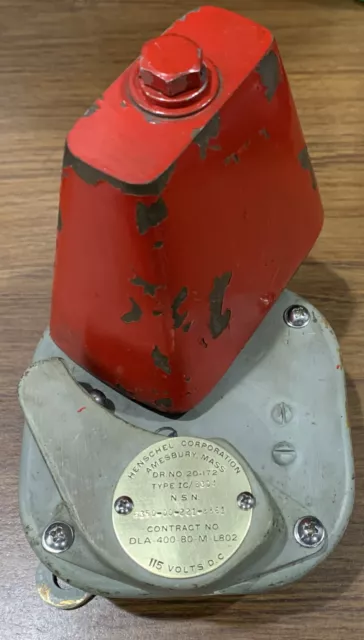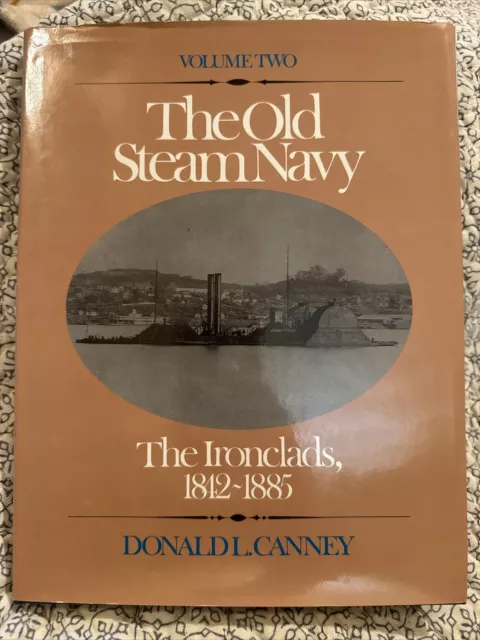1946 US Navy NAVAL Reciprocating STEAM ENGINES Reprint
Seller: n-b-books ✉️ (13,824) 100%,
Location: Mebane, North Carolina, US,
Ships to: WORLDWIDE,
Item: 232229620174
1946 US Navy NAVAL Reciprocating STEAM ENGINES Reprint . Naval Reciprocating Steam Engines, Part IV from NAVAL MACHINERY , 1946 , originally published by the United States Naval Academy, Annapolis, Maryland, 1946. Reprinted by Nation Builder Books, Leesburg, VA, 2003. 8½ x 11 softcover comb-bound, paginated by section, approximately 120 pages.
Please note that this is a PHOTOCOPIED reproduction of the 1946 original. The accompanying images were scanned from a reprint, not the original.
If you’re looking for something that will cover the basics AND some of the advanced material on large steam engines, this gem from the end of World War II is just the thing. There may not be much coverage of some of the historically more interesting early engines, but written, as it is, at the end of the era of steam propulsion, this covers everything up to the last refinements in nautical applications of steam. There are dozens and dozens of excellent line drawings and some photos or drawings of various components or phases of operation.
Table of Contents:
- CHAPTER 1: Descriptive Classification.
- 1-1 The Simple Reciprocating Engine.
- 1-2 Steam, the Working Substance.
- 1-3 Classification of Reciprocating Engines. 1-4 General Description of a Three Cylinder, Triple Expansion, Marine Reciprocating Engine.
- 1-5 Uniflow Engine.
- 1-6 Combination Engines.
- CHAPTER 2: The Slide Valve.
- 2-1 General Description.
- 2-2 The Movement of the Piston and Valve.
- 2-3 Outside and Inside Valves.
- 2-4 The Valve Motion and Eccentric.
- 2-5 Geometrical Representation of the Action of the Slide Valve.
- 2-6 The Zeuner Valve Diagram.
- 2-7 The Opening of the Steam Port.
- 2-8 The Complete Zeuner Diagram.
- 2-9 Position of the Piston - Influence of Connecting Rod.
- 2-10 The Elliptical Valve Diagram.
- 2-11 Influence of Obliquity of Connecting and Eccentric Rods.
- 2-12 Double-Ported Flat Slide Valve.
- 2-13 Balance or Equilibrium Ring.
- 2-14 Piston Valves.
- 2-15 Packing Rings.
- 2-16 Balance Pistons.
- 2-17 Fitting of Valve and Chest.
- 2-18 Lovekin's Assistant Cylinder.
- 2-19 Setting Slide Valves.
- 2-20 To Place an Engine on the Dead Center.
- CHAPTER 3: Valve Gears and Reversing Arrangements.
- 3-1 Reversing Gear-Link Motion.
- 3-2 The Link Motion.
- 3-3 Open Rods and Crossed Rods.
- 3-4 Point of Suspension.
- 3-5 Radius of the Link.
- 3-6 Types of Links.
- 3-7 Independent Linking Up Gear.
- 3-8 Steam Reversing Engines.
- CHAPTER 4: Multiple-Expansion Engines.
- 4-1 Multiple-Expansion Engines.
- 4-2 Effect of Cut-off on Distribution of Work
- 4-3 Ratio of Cylinders.
- 4-4 Receivers.
- 4-5 Mechanical Advantages of the Multiple-Expansion Engine.
- 4-6 Triple-Expansion Engines.
- 4-7 Quadruple-Expansion Engines.
- 4-8 Arrangement of Cylinders.
- 4-9 Experimental Efficiency.
- CHAPTER 5: Cylinders-Details, Attachments, etc.
- 5-1 Engine Cylinders.
- 5-2 Cylinder Cover.
- 5-3 Cylinder Liners.
- 5-4 Valve Chest Liners-False Seats.
- 5-5 Cylinder Lagging and Clothing.
- 5-6 Piston.
- 5-7 Packing Rings and Springs.
- 5-8 Follower Plate.
- 5-9 Piston Rod.
- 5-10 Stuffing Box.
- 5-11 Metallic Packing.
- 5-12 Cylinder Drain Cocks and Relief Valves.
- 5-13 Indicator Connections.
- 5-14 By-Pass to Receivers.
- CHAPTER 6: Crossheads, Connecting Rod and Crankshafts.
- 6-1 Crosshead and Crosshead Guides.
- 6-2 Crankshafts.
- 6-3 Crankshaft Bearings.
- 6-4 Bedplates, Engine Framing, Columns.
- 6-5 Thrust Shaft.
- 6-6 Turning Force-Crank and Connecting Rod.
- 6-7 Forces Acting at Crosshead.
- 6-8 White Metal.
- 6-9 Forced Lubrication.
- CHAPTER 7: The Indicator Diagram.
- 7-1 General.
- 7-2 The Indicator.
- 7-3 Outside Connected Spring Indicators.
- 7-4 Preparation and Method of Taking Diagrams.
- 7-5 Scale of Spring.
- 7-6 Reducing Motions.
- 7-7 The Indicator Diagram.
- 7-8 Wiredrawn Steam.
- 7-9 Clearance.
- 7-10 To Find the Ratio of Clearance from the Diagram.
- 7-11 Compression or Cushioning.
- 7-12 Errors Shown by the Diagram.
- 7-13 Steam Pipe and Steam Chest Diagrams.
- 7-14 Mean Effective Pressure.
- 7-16 Computing the Indicated Horsepower from the Diagram.
- 7-16 Planimeters.
- 7-17 Steam or Water Consumption from the Indicator Diagram.
- 7-18 Combination of Indicator Diagrams in Multiple-Expansion Engines.
- 7-19 Standardization of the Indicator.
- 7-20 The Parallelism of the Pencil Movement.
- 7-21 Accuracy of the Drum Motion.
- 7-22 Back Lash and Friction.
- CHAPTER 8: Engine Balance.
- 8-1 Preliminary.
- 8-2 Two Sets of Moving Parts.
- 8-3 Variations in Crankshaft Movements and Torsional Vibration.
- 8-4 Origin of Unbalanced Forces.
- 8-5 Rotational Masses.
- 8-6 Balancing Reciprocating Parts.
- 8-7 Location of Engines to Reduce Vibration.
- CHAPTER 9: Uniflow Engine.
- 9-1 Uniflow Principle in Contrast to the Counter-flow Principle.
- 9-2 Type of Valves.
- 9-3 Three Cylinder, Marine Uniflow Engine.
- 9-4 Advantages of the Uniflow Engine.
- Condition: New – Open box
PicClick Insights - 1946 US Navy NAVAL Reciprocating STEAM ENGINES Reprint PicClick Exclusive
- Popularity - 1 watcher, 0.0 new watchers per day, 90 days for sale on eBay. Normal amount watching. 0 sold, 10 available.
- Best Price -
- Seller - 13,824+ items sold. 0% negative feedback. Great seller with very good positive feedback and over 50 ratings.
People Also Loved PicClick Exclusive

 Decor US Navy Poster. Graphic Design. U. S Naval reserve. Home Wall Art. 1773$61.97 Buy It Now
Decor US Navy Poster. Graphic Design. U. S Naval reserve. Home Wall Art. 1773$61.97 Buy It Now
 THE OLD STEAM NAVY Frigates, Sloops & Gunboats 1815-1885, 1990, HC, 1ST ED, MINT$96.39 Buy It Now or Best Offer
THE OLD STEAM NAVY Frigates, Sloops & Gunboats 1815-1885, 1990, HC, 1ST ED, MINT$96.39 Buy It Now or Best Offer 4 watchers
4 watchers Henschel Corporation Dr.no 20-172 Vintage Us Navy/Uscg Alarm Bell$122.56 Buy It Now
Henschel Corporation Dr.no 20-172 Vintage Us Navy/Uscg Alarm Bell$122.56 Buy It Now 3 watchers
3 watchers Henschel Corporation Dr.no 20-172 Vintage Us Navy/Uscg Alarm Bell$122.56 Buy It Now
Henschel Corporation Dr.no 20-172 Vintage Us Navy/Uscg Alarm Bell$122.56 Buy It Now 4 watchers
4 watchersTHE OLD STEAM NAVY The Ironclads Book 1842-1885 1990 1ST Edition Donald Canney
$82.62 Buy It Now or Best Offer


